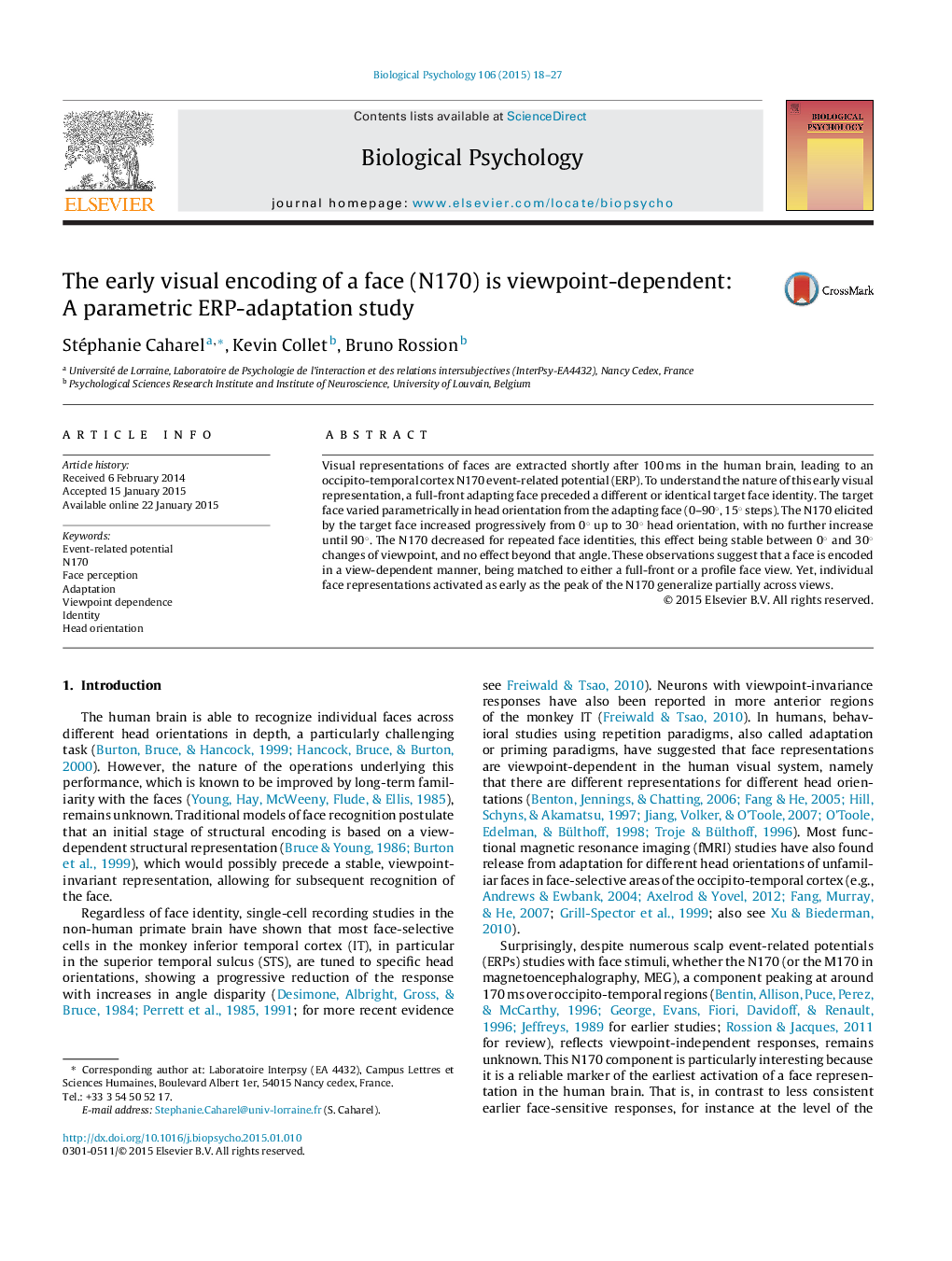| Article ID | Journal | Published Year | Pages | File Type |
|---|---|---|---|---|
| 7278627 | Biological Psychology | 2015 | 10 Pages |
Abstract
Visual representations of faces are extracted shortly after 100 ms in the human brain, leading to an occipito-temporal cortex N170 event-related potential (ERP). To understand the nature of this early visual representation, a full-front adapting face preceded a different or identical target face identity. The target face varied parametrically in head orientation from the adapting face (0-90°, 15° steps). The N170 elicited by the target face increased progressively from 0° up to 30° head orientation, with no further increase until 90°. The N170 decreased for repeated face identities, this effect being stable between 0° and 30° changes of viewpoint, and no effect beyond that angle. These observations suggest that a face is encoded in a view-dependent manner, being matched to either a full-front or a profile face view. Yet, individual face representations activated as early as the peak of the N170 generalize partially across views.
Related Topics
Life Sciences
Neuroscience
Behavioral Neuroscience
Authors
Stéphanie Caharel, Kevin Collet, Bruno Rossion,
